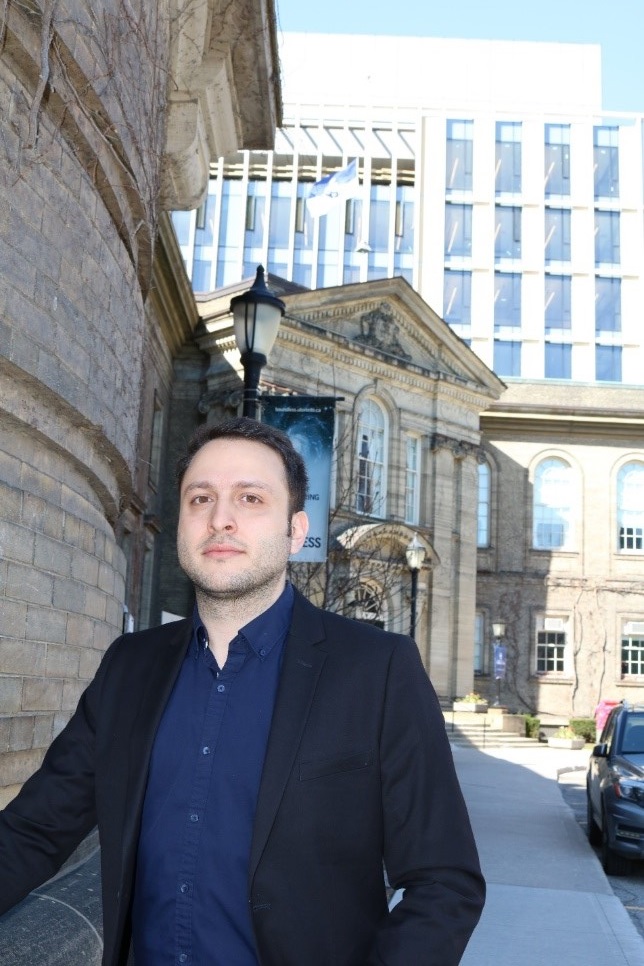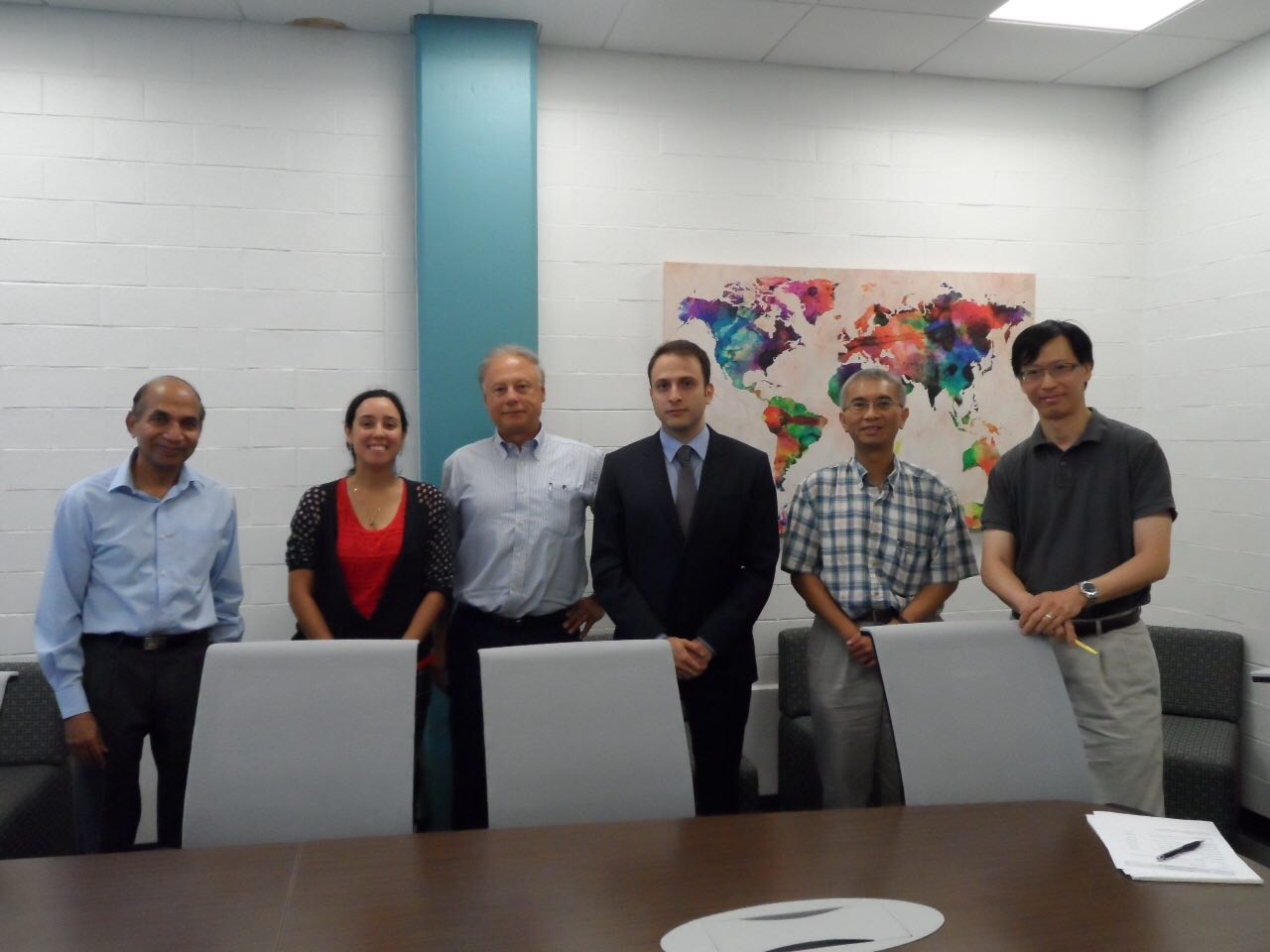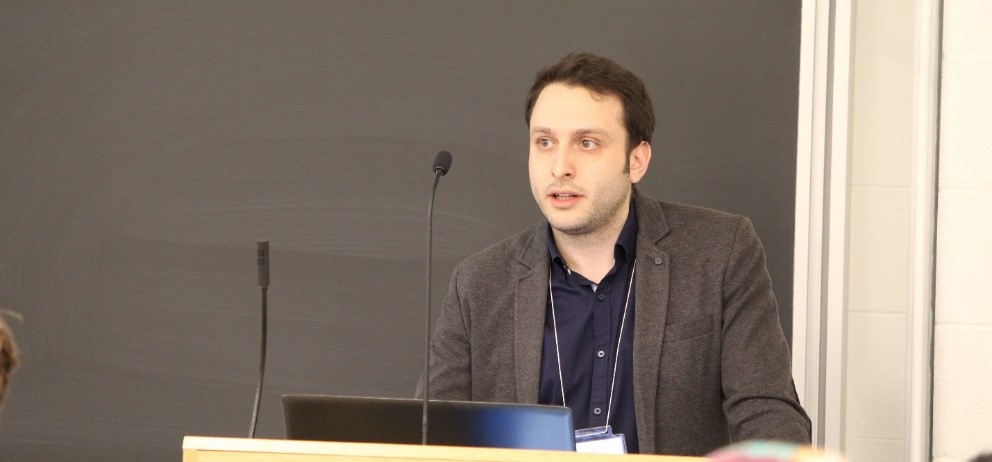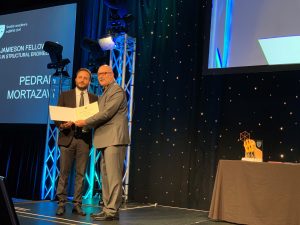 From an early age, OSPE member Pedram Mortazavi, MASc., P.Eng., knew that he wanted to be a structural engineer. More specifically, Mortazavi knew exactly how he intended to use his future career to make the world a better and safer place.
From an early age, OSPE member Pedram Mortazavi, MASc., P.Eng., knew that he wanted to be a structural engineer. More specifically, Mortazavi knew exactly how he intended to use his future career to make the world a better and safer place.
“Engineering was a family business,” says Mortazavi. “My father was an engineer, so I was lucky enough to go on frequent site visits with my dad, who took every opportunity to explain the structural components of buildings. I grew up in Iran – a seismically active region – and it wasn’t hard to see that construction practices didn’t always account for this critical factor. I recognized this challenge and knew this was an opportunity to make a real difference in people’s lives.”
Today, Mortazavi is a Ph.D. candidate in structural engineering under the supervision of Professors Constantin Christopoulos, P.Eng., and Oh-Sung Kwon, P.Eng., at the University of Toronto (U of T). His areas of interest include seismic design, performance-based design and earthquake engineering, with focus on the study of steel structures. Mortazavi also serves as the President of the Earthquake Engineering Research Institute’s (EERI) U of T Chapter, which seeks to raise awareness about earthquakes and the importance of studying them to build resilient infrastructure that limits human and economic casualties.
Q: Can you tell us about your engineering journey to date?
—
A: After having completed my undergraduate engineering degree in Iran, I wanted to do my graduate studies in North America. I chose to pursue my Master’s at Carleton University, under the guidance of Professor Jagmohan Humar, P.Eng., who is a leading expert in earthquake engineering, a Distinguished Research Professor at Carleton University, and an active member on the Standing Committee on Earthquake Design of the National Building Code of Canada.
My research was aimed at better understanding the seismic performance of steel structures with a flexible roof diaphragm. In structural engineering, a diaphragm is a structural element that transfers the lateral loads to the lateral load resisting system of a structure (such as shear walls or braced frames).
For this study, we developed numerical models of 64 steel structures with flexible roof diaphragms. The buildings were subjected to ten earthquake ground motions, representative of the seismological characteristics of several seismic regions in Canada. The resulting behaviour of these steel structures enabled us to develop new design methodologies to improve the performance and resilience of such structures.
In addition to my research and coursework, I peer reviewed several consulting projects to retrofit heritage buildings. The primary challenge was to maintain the historical integrity of the building by minimizing the structural interventions.
For many reasons, my Master’s was a very defining period in my career. Professor Humar not only helped me to become a better researcher and engineer, but I also had the opportunity to TA. I ran tutorials, assisted students with their projects and helped lecture. The experience was so rewarding, and this stuck with me even once I had entered the working world.

I started working in the structural engineering department of J.L. Richards & Associates Limited, a multi-disciplinary consulting firm in Ottawa. It was such an enriching experience working closely with great engineers along with other professionals, from architects, to planners and developers. It was at this point in my career that I truly appreciated just how much engineering is an integrated practice. Structural, mechanical, civil, electrical engineers – we all had to work together as a team.
The importance of communication and collaboration in engineering became even more apparent as I worked on a variety of projects across Canada and internationally. As part of the design team, I worked on performance-based seismic retrofits and nonlinear time-history analyses of a steel structure with friction dampers in Beijing, a nuclear facility in Canada, as well as the detailed design and retrofit of several large-scale wastewater treatment plants in Canada and the United States, to name a few.
After about two years in consulting, my love of academia drove me to pursue my Ph.D. at the University of Toronto and with Professors Christopoulos and Kwon, which brings me to where I am today.
Q: Congratulations on being awarded the 2019 G.J. Jackson Fellowship for your current research. Can you tell us more about this project?
—
A: My Ph.D. project combines two fascinating research thrusts in the field of earthquake engineering: the development of advanced seismic resilient systems and multi-element hybrid simulation. A joint project between U of T and Cast Connex – an industry leader in the design and supply of cast steel components in steel structures – this research focuses on experimental validation and performance assessment of Cast Steel Replaceable Link Elements in Steel Eccentric Braced Frame (EBF) structures.
We aim to develop off-the-shelf Cast Replaceable Link Beams that have highly increased ductility and rotational capacity, to overcome many of the challenges associated with the design and construction of EBFs. The proposed product will simplify design processes, constructability and potential repairs, due to the product’s replaceability. Most importantly, by delivering a more resilient design of EBFs, it enhances their performance attributes under extreme loads, leading to more resilient Canadian infrastructure.

Since 1988, this Fellowship has been awarded annually by the Canadian Institute of Steel Construction (CISC) Education and Research Council to graduate students doing research in steel structures. There are many distinguished Fellows who have received this award and have made remarkable contributions to the field and to the engineering profession. To be in their company is of the highest honour and motivation for me.
I feel very fortunate to be doing my doctoral studies at the University of Toronto, a world-class research centre, and under the guidance of such well-recognized supervisors. It is truly these factors that helped me stand out and be considered for such a recognition.
Q: You were also the recipient of a 2018 TA Teaching Excellence Award from U of T’s Centre for Teaching Support and Innovation (CTSI) and Teaching Assistant Training Program (TATP). Can you tell us what your experience has been like in engineering academia?
—
A: I realized early on in my teaching experience that I would eventually like to go into academia, so being nominated by my students and receiving this award felt like a sign that I am on the right path. It was an unprecedented recognition in our department, and it means a great deal that I was able to challenge and impact my students’ learning in a positive way.
I like to think that my practical experience as a professional engineer has helped me contextualize theoretical concepts for my students. I also try to be open to criticism so I can continue to improve. In the past, I have recorded my lectures so I can modify my delivery in the classroom. I also actively seek out feedback from my colleagues, my

Professors, and especially my students, by having them fill out evaluations regularly, so I can adjust my approach before the end of the term if it’s not resonating with a given group. It sounds cliché, but I truly believe you must be passionate about the subject matter to stay organized, communicate and teach effectively.—
Most recently, Mortazavi was also named the recipient of another prestigious award – the Donald Jamieson Fellowship – offered by the Canadian Society for Civil Engineering (CSCE). The Fellowship is awarded annually to candidates pursing full-time graduate studies in structural engineering at a Canadian University. Congratulations on behalf of the OSPE community – we look forward to following along as you continue to pursue your passion, Pedram!
Do you have any questions for Pedram Mortazavi? Leave a comment below.





Leave a Comment